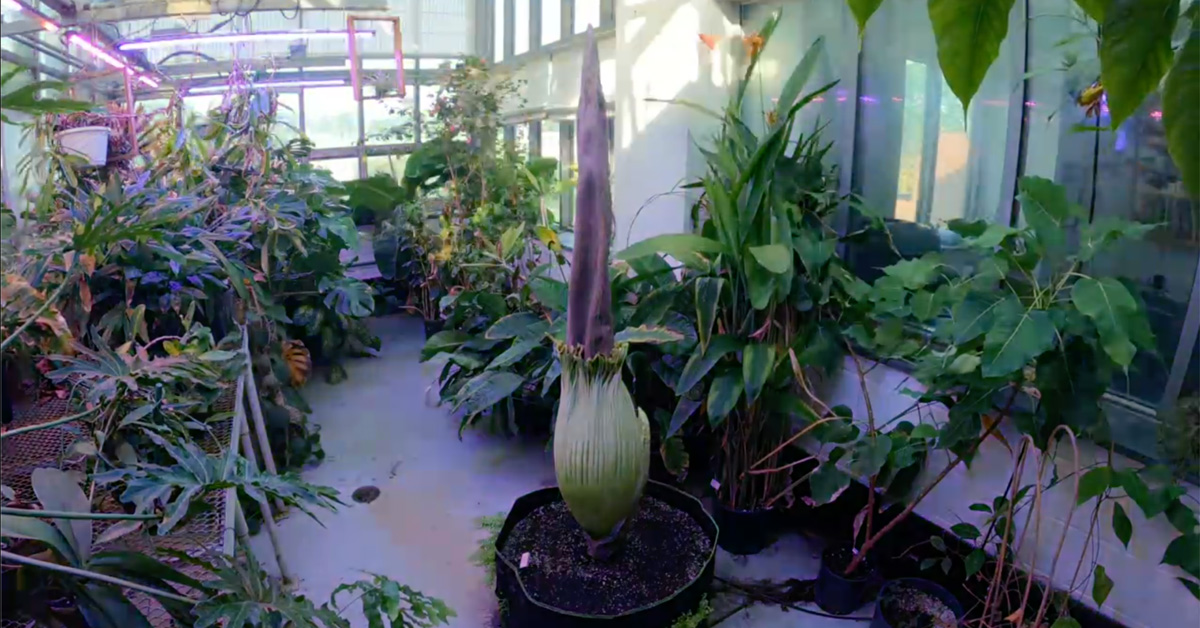Wheaton’s rare corpse flower featured on WBZ News

Anticipation of rare, notoriously smelly giant plant in greenhouse gains spotlight
It smells like rotting flesh.
Ordinarily, those words would not be the most enticing to get you to check out what is happening in the Wheaton College Greenhouse—or anywhere else for that matter. But the blooming of a corpse flower—and its aroma—is no ordinary event.
“These plants often take seven to eight years to bloom and the flowers only last a few days,” said Ben Robbins, the greenhouse horticulturist at Wheaton. “It’s the largest flower structure in the world and smells like rotting flesh to attract pollinators.”
A rare example of amorphophallus titanum, the plant is expected to bloom on campus soon for the first time. WBZ News in Boston noted the anticipation in a television broadcast on Friday, July 14. The Enterprise (Brockton, Mass.) wrote about the plant on July 16 in the story “’World’s smelliest plant’: Wheaton livestreams blooming giant corpse flower. How to watch.”
As the flower bloomed on Saturday, July 22 and Sunday, July 23, other media outlets covered the event, including The Boston Globe with the story “Rare sight, rare smell: Corpse flower blooms at Wheaton College in Norton,” which featured an extensive interview with Robbins. A subscription may be needed to access the story. The Sun Chronicle in Attleboro, Mass., also wrote about the blooming on July 22.
Robbins worked with campus colleagues to set up a YouTube livestream as well as a timelapse of the event. The WBZ broadcast included a glimpse of the YouTube livestream.
A rainforest plant native to the Sumatra region of Indonesia, the corpse flower has become even more difficult to see in the wild due to habitat loss, which makes the possibility of seeing it happen exciting, Robbins said.
